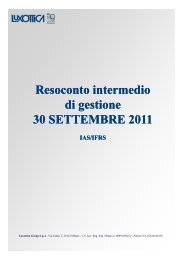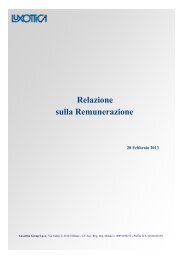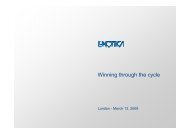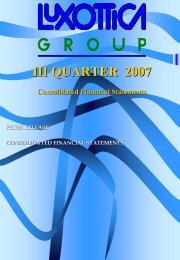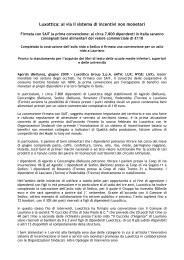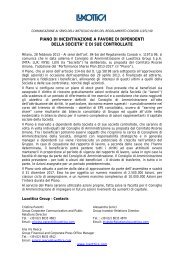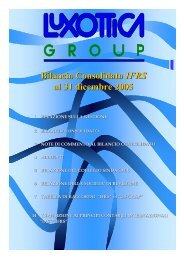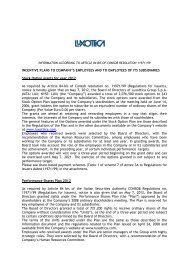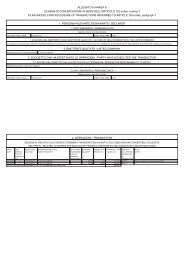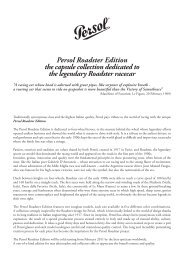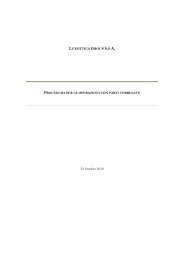Annual Review 2012 - Luxottica
Annual Review 2012 - Luxottica
Annual Review 2012 - Luxottica
Create successful ePaper yourself
Turn your PDF publications into a flip-book with our unique Google optimized e-Paper software.
Consolidated financial statements - NOTES<br />
| 111 ><br />
• Fair value hedge - when a derivative financial instrument is designated as a hedge<br />
of the exposure to changes in fair value of a recognized asset or liability (“hedged<br />
item”), both the changes in fair value of the derivative instrument as well as changes in<br />
the hedged item are recorded in the consolidated statement of income. The gain or<br />
loss related to the ineffective portion of the derivative instrument is recognized in the<br />
consolidated statement of income as Other - net.<br />
• Cash flow hedge - when a derivative financial instrument is designated as a hedge<br />
of the exposure to variability in future cash flows of recognized assets or liabilities<br />
or highly probable forecasted transactions (“cash flow hedge”), the effective<br />
portion of any gain or loss on the derivative financial instrument is recognized<br />
directly in Other Comprehensive Income (hereinafter “OCI”) . The cumulative<br />
gain or loss is removed from OCI and recognized in the consolidated statement<br />
of income at the same time as the economic effect arising from the hedged item<br />
affects income. The gain or loss related to the ineffective portion of the derivative<br />
instrument is recognized in the consolidated statement of income as Other - net.<br />
When a forecasted transaction is no longer expected to occur, the cumulative gain<br />
or loss that was reported in equity is immediately transferred to the consolidated<br />
statement of income to Other - net. When a hedge no longer meets the criteria<br />
for hedge accounting, any cumulative gain or loss existing in OCI at that time<br />
remains in equity, and is recognized when the economic effect arising from the<br />
hedged item affects income. The Group utilizes derivative financial instruments,<br />
primarily Interest Rate Swap and Currency Swap contracts, as part of its risk<br />
management policy in order to reduce its exposure to interest rate and exchange<br />
rate fluctuations. Despite the fact that certain currency swap contracts are used<br />
as an economic hedge of the exchange rate risk, these instruments may not fully<br />
meet the criteria for hedge accounting pursuant to IAS 39. If so, the instruments<br />
are marked to market at the end of each reporting period and changes in fair value<br />
are recognized in the consolidated statement of income.<br />
Accounts payable and other payables<br />
Accounts payable are obligations to pay for goods or services that have been acquired in<br />
the ordinary course of business from suppliers. Accounts payable are classified as current<br />
liabilities if payment is due within one year or less from the reporting date. If not, they are<br />
presented as non-current liabilities.<br />
Accounts payable are recognized initially at fair value and subsequently measured at<br />
amortized cost using the effective interest method.<br />
Long-term debt<br />
Long-term debt is initially recorded at fair value, less directly attributable transaction<br />
costs, and subsequently measured at its amortized cost by applying the effective<br />
interest method. If there is a change in expected cash flows, the carrying amount<br />
of the long-term debt is recalculated by computing the present value of estimated<br />
future cash flows at the financial instrument’s original effective interest rate. Longterm<br />
debt is classified under non-current liabilities when the Group retains the<br />
unconditional right to defer the payment for at least 12 months after the balance



